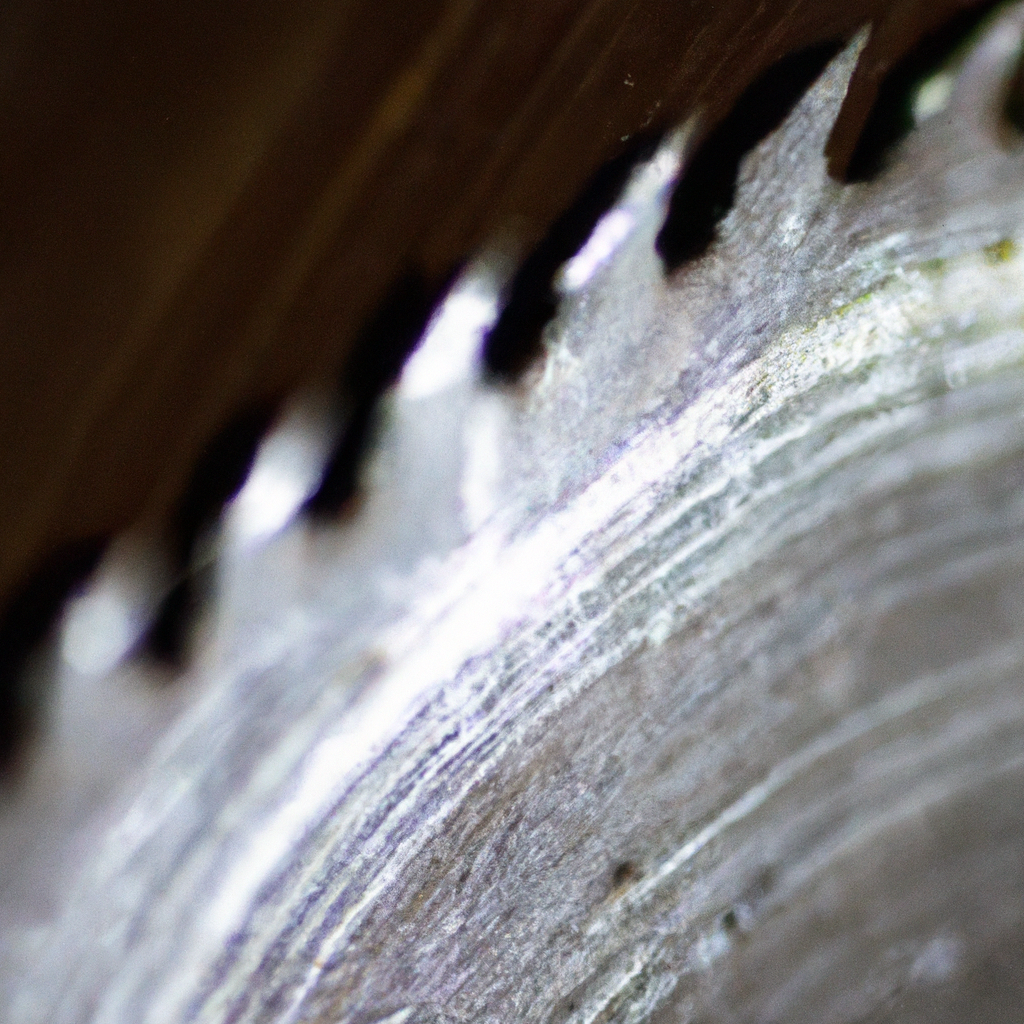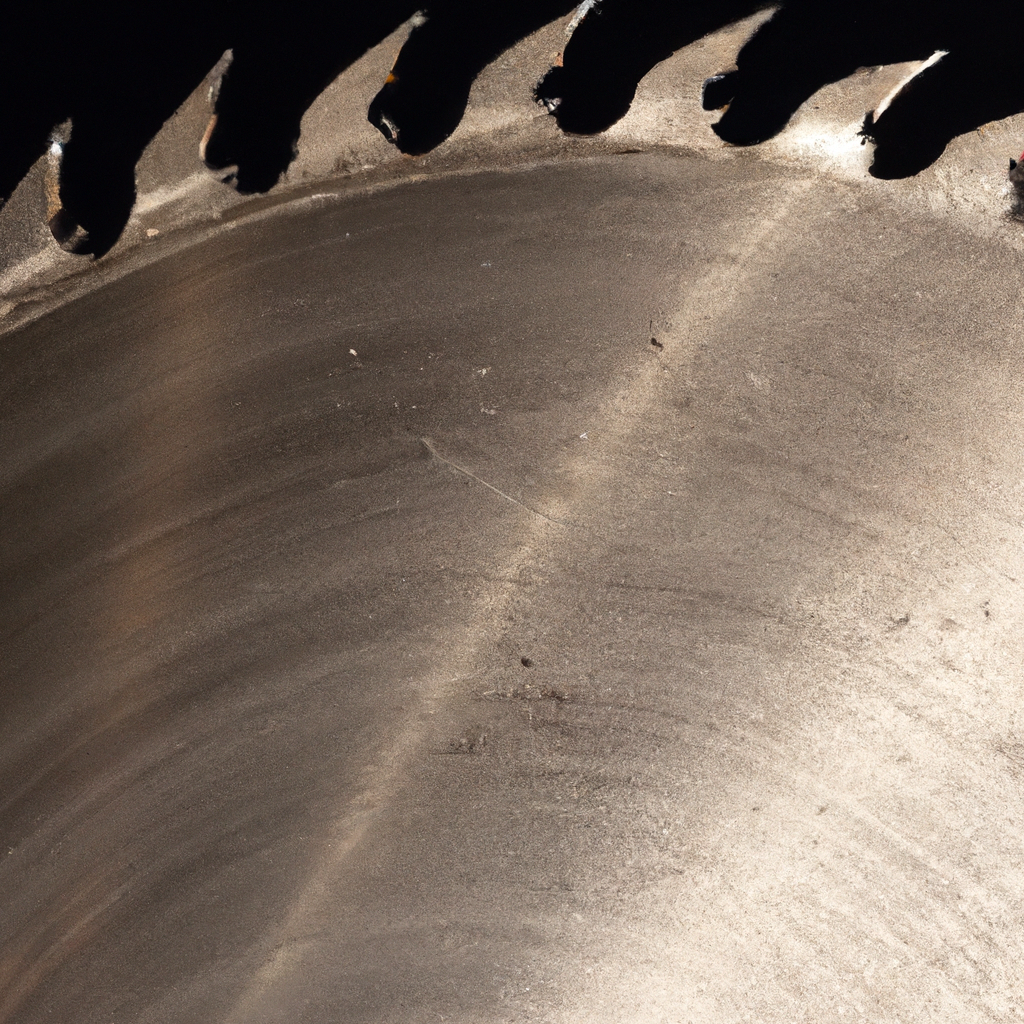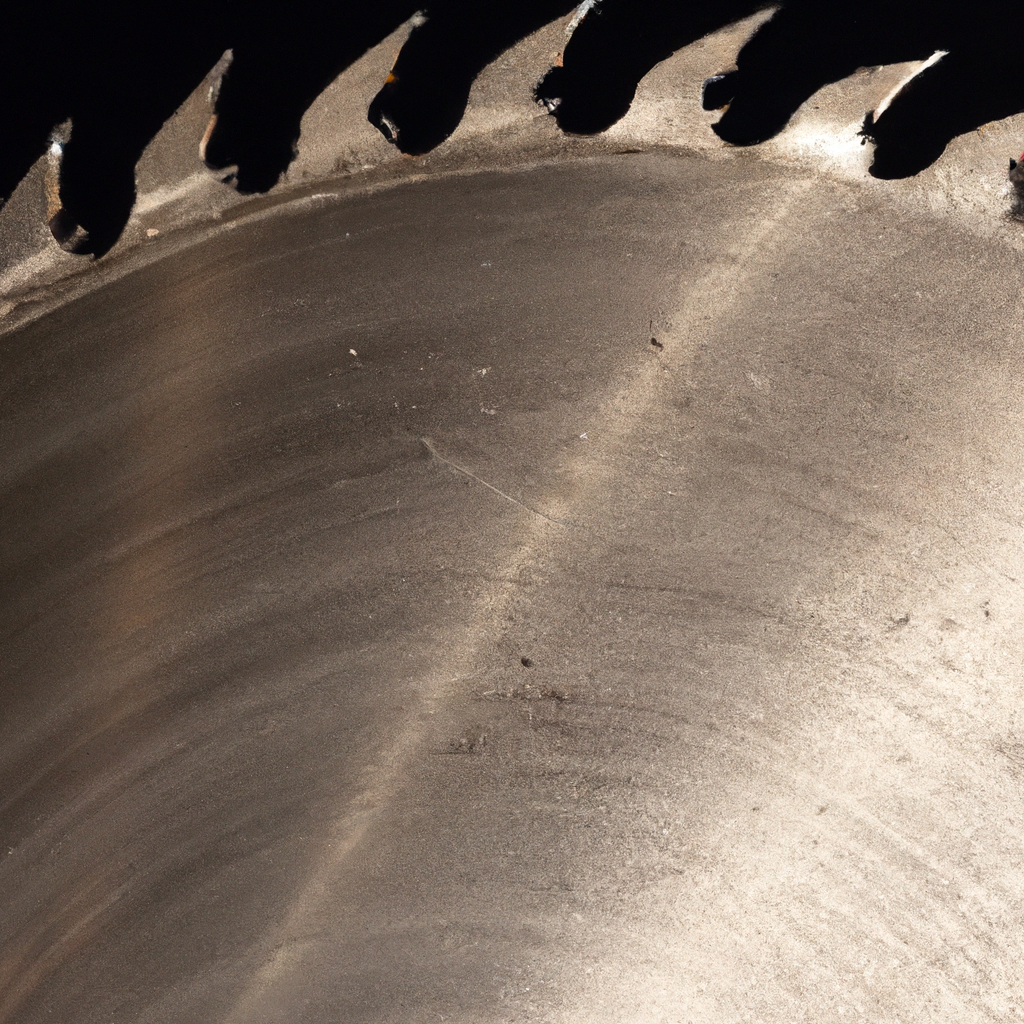You know that feeling when your table saw blade starts getting dull and it’s time to clean it? Well, you’re in luck because we’ve got the perfect guide for you. In this article, we’ll show you step-by-step how to clean your table saw blade and restore it to its full cutting potential. From the tools you’ll need to the proper technique, we’ve got you covered. So grab your cleaning supplies and let’s get that saw blade sparkling clean in no time.

General Safety Precautions
When it comes to cleaning a table saw blade, it’s important to prioritize safety. Before you begin, make sure you are wearing the appropriate safety gear, such as goggles and gloves, to protect your eyes and hands from any potential harm. Additionally, always remember to disconnect the blade from the power source before attempting to clean it. This precaution will significantly reduce the risk of accidental injuries during the cleaning process. Lastly, ensure that the blade is securely positioned to prevent any mishaps while handling it.
Cleaning Supplies
Gathering the necessary cleaning supplies will ensure a thorough and efficient cleaning process. Here’s a list of items you’ll need:
- Soft cloth or sponge: This will be used to wipe off any excess sawdust or residue from the blade.
- Mild dish soap: Mixing a small amount of mild dish soap with water will provide a gentle yet effective cleaning solution.
- Fine steel wool: Steel wool is ideal for removing rust or stubborn residue without causing damage to the blade.
- Rubbing alcohol: This can be used in combination with steel wool to create a cleaning paste for more challenging cleaning tasks.
- Toothbrush: A toothbrush with soft bristles is useful for reaching small crevices and removing any dirt or debris from the blade.
Removing the Blade
Before you can start cleaning your table saw blade, you’ll need to safely remove it from the saw. Follow these steps to ensure a smooth and hassle-free removal:
- Ensure the power source is turned off to avoid any accidental starts while handling the blade.
- Loosen the arbor nut that secures the blade to the saw. Use an appropriate wrench or tool for this task.
- Once the arbor nut is loose, carefully remove the outer blade washer.
- With caution, lift the blade off the arbor shaft, making sure to support its weight and handle it with care to avoid any accidents or injuries.

Initial Cleaning
Now that the blade has been safely removed, it’s time to give it a basic cleaning to remove any surface debris or sawdust. Follow these steps for the initial cleaning process:
- Thoroughly wipe off any excess sawdust or loose debris from the blade using a soft cloth or sponge.
- Fill a basin or container with warm water and add a small amount of mild dish soap. Submerge the blade in the soapy water solution, allowing it to soak for a few minutes.
- Using a soft cloth or sponge, gently scrub the blade to remove any remaining dirt or residue. Take care not to apply excessive force or use abrasive materials that could damage the blade’s surface.
Removing Residue and Rust
If your table saw blade has accumulated stubborn residue or rust over time, additional cleaning steps may be required. Follow these instructions to effectively remove residue and rust from your blade:
- Create a paste by combining rubbing alcohol and fine steel wool. This mixture will provide an effective cleaning solution for tackling tougher stains or rust spots.
- Apply the paste evenly onto the blade’s surface, ensuring that all affected areas are covered. Allow the paste to sit on the blade for a few minutes to help break down the residue or rust.
- Gently scrub the blade in a circular motion using the steel wool. Be mindful of the pressure applied and avoid using excessive force that could damage the blade’s teeth or cutting edge.
- Wipe off the residue with a soft cloth or sponge, rinsing it out regularly to remove any accumulated debris. Continue this process until the blade appears clean and free from rust or residue.
Removing Stubborn Residue
In some cases, certain stains or residue may be more stubborn and require additional effort to remove. Follow these steps for dealing with such stubborn residue on your table saw blade:
- Soak the blade in a basin filled with warm, soapy water for a few minutes. This will help to loosen the stubborn residue and make it easier to remove.
- Using a toothbrush with soft bristles, gently scrub the blade, paying extra attention to the areas with stubborn residue. The bristles of the toothbrush will allow you to reach into the crevices and remove any dirt or debris.
- Rinse the blade thoroughly with clean water, ensuring that all soap and residue are completely washed away.
- To avoid any potential issues with rust, make sure to dry the blade completely using a soft cloth or allowing it to air dry before reassembling.
Preventing Rust
Preventing rust on your table saw blade is essential for maintaining its performance and longevity. Follow these preventive measures to keep your blade in top condition:
- After cleaning, apply a thin layer of silicone spray to the blade’s surface. This spray will act as a protective barrier, helping to prevent rust from forming on the blade.
- Use a soft cloth to wipe off any excess silicone spray, ensuring that the coating is even and not excessive. This will prevent any undesirable buildup on the blade that could affect its cutting performance.
- Store the blade in a dry place, free from moisture and humidity. Avoid leaving it exposed to the elements or in areas prone to condensation.
- Consider using blade protectors to further shield your table saw blade from potential rust or damage. These protectors are typically made of plastic or metal and are designed to fit over the blade when it is not in use.
Sharpening the Blade
Over time, table saw blades can become dull and require sharpening to maintain optimal cutting performance. Here’s how you can sharpen your blade effectively:
- Start by inspecting the blade for signs of dullness, such as burn marks on the wood or difficulty in making clean cuts.
- Use a sharpening tool or file specifically designed for table saw blades. Follow the manufacturer’s instructions carefully to ensure correct usage and safety.
- Depending on the type of sharpening tool you are using, you may need to remove the blade from the saw for sharpening. Always prioritize safety and follow proper procedures when handling the blade outside of the saw.
- Test the blade’s sharpness by making a few test cuts on scrap wood. If the blade is still not cutting efficiently, repeat the sharpening process until the desired sharpness is achieved.
Maintenance Tips
To keep your table saw blade performing at its best, it’s important to maintain regular cleaning and upkeep. Here are some additional maintenance tips to consider:
- Clean the blade regularly, even if it doesn’t appear visibly dirty. Regular cleaning will help prevent buildup and ensure optimal cutting performance.
- Avoid cutting wet or damp wood as this can lead to accelerated blade wear or potential rust formation. Allow the wood to dry properly before using your table saw.
- Consider using a commercial blade cleaning solution for more intensive cleaning tasks or when dealing with particularly stubborn stains or residue.
- Before each use, take a moment to inspect the blade for any visible damage, dullness, or missing teeth. Any signs of wear or damage should be addressed promptly to maintain both the blade’s performance and your safety.
Reassembling the Blade
After cleaning, sharpening, or performing any necessary maintenance tasks, it’s time to reassemble the blade onto your table saw. Follow these steps to ensure a proper reassembly:
- Ensure that the blade is completely dry from any cleaning liquids or moisture before proceeding.
- Carefully place the blade back onto the arbor shaft, aligning the mounting hole with the arbor.
- Secure the outer blade washer back onto the arbor, ensuring it is properly seated and aligned.
- Using the appropriate wrench or tool, tighten the arbor nut securely, but do not overtighten. By following these steps, you can safely and effectively clean your table saw blade, ensuring optimal performance and longevity. Remember to always prioritize safety and follow the manufacturer’s instructions for your specific table saw model before attempting any cleaning or maintenance tasks. Happy sawing!

